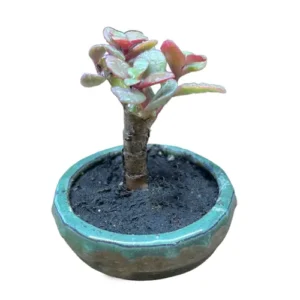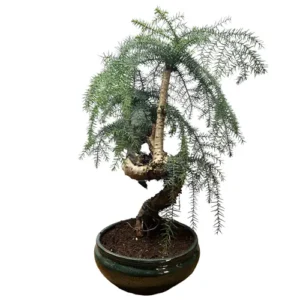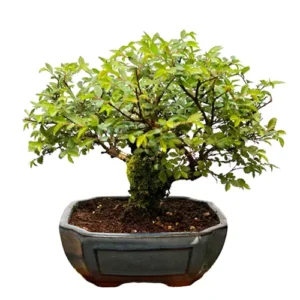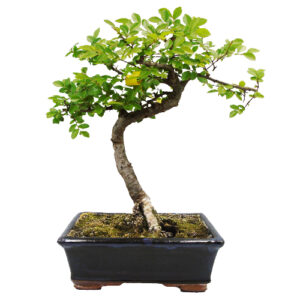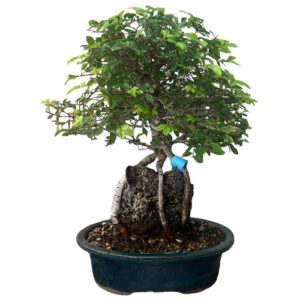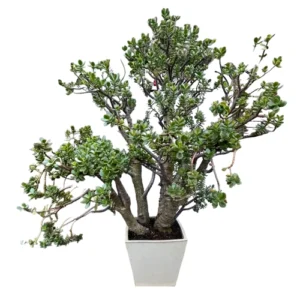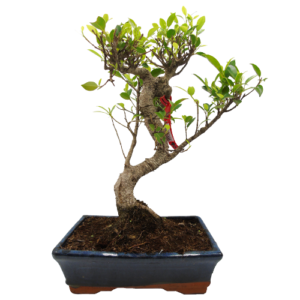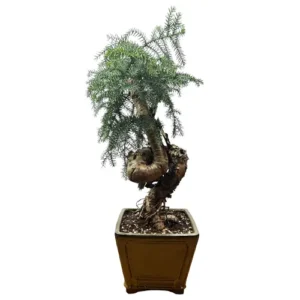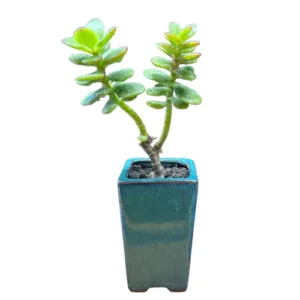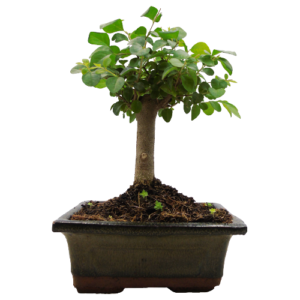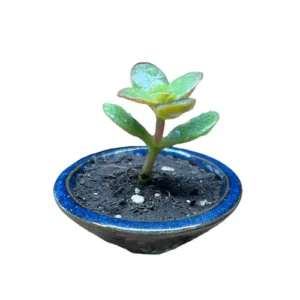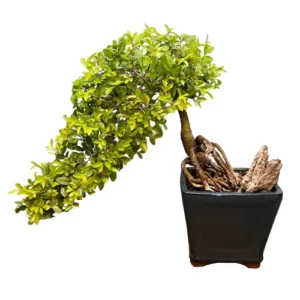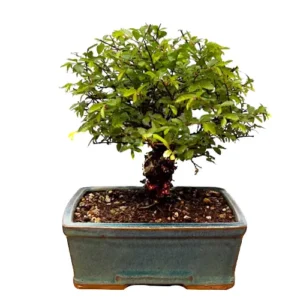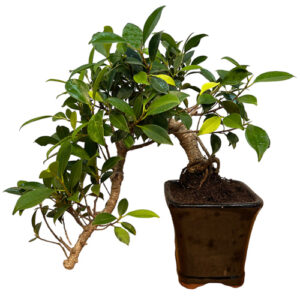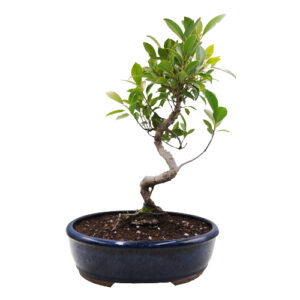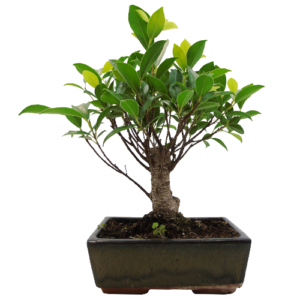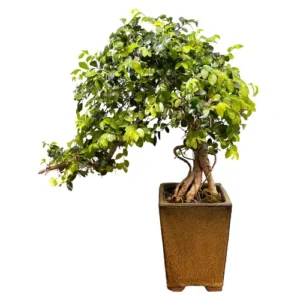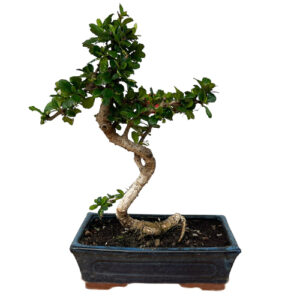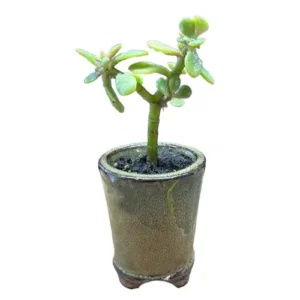Serissa Foetida
Snow Rose Bonsai
Snow Rose, also known as the Serissa foetida or tree of a thousand stars, is a tropical shrub that is native to southeast Asia. It is valued by bonsai collectors for its gnarled bark, small white flowers and fine ramification, and is one of the more challenging bonsai trees to look after.
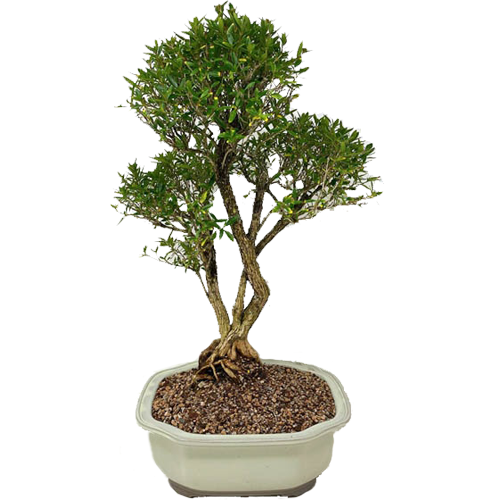
Snow Rose Bonsai Care Tips
Placement
The Snow Rose needs a lot of bright light and is best kept as an indoor bonsai tree in the UK. However, during the growing seasons of spring and summer, it would benefit from the extra sunlight and airflow that these months bring, so consider placing it outside in a sunlit spot once it gets warm and sunny. If placing outside in summer, just ensure that the Snow Rose is protected from the wind and that temperatures overnight will not drop under 10 °C.
Note that the Snow Rose does not tolerate changes in temperature well, and even just a change of location can cause this sensitive tree to drop its leaves. It is therefore recommended that if you do need to move your bonsai, do so only when necessary and allow the tree time to acclimatise first.
As autumn comes around, bring your Snow Rose into the house and provide it with a warm and well-lit space, keeping the temperature constant between 10 °C and 20 °C with high humidity. If it is difficult to keep your tree warm and with enough light over the winter, consider investing in heaters and artificial lighting, and take into account that the warmer the position, the more light is needed to avoid leggy growth.
Watering
There is no definitive guide to watering and it should be conducted on an observational schedule, not a routine. This means that it is important to keep an eye on the moisture levels of the soil to avoid over and under watering, both which can lead to dropping leaves and/or root death. The amount of water a bonsai requires depends on pot size, climate, airflow, soil and tree type so it is best to use your eyes and fingers to assess whether the soil is damp, wet or dry.
If the top inch or so of soil has dried, it is ready to be watered. When you water, try to get an even coverage over the roots and soil, allowing water to flow out from the bottom of the pot to ensure a good soaking.
If you are a first-time bonsai owner, another way to water is by submerging the entire pot in water until the bubbles stop. If you choose this method, be aware that your bonsai may not need watering for another two to four days, but this will depend on the factors mentioned above such as soil type, pot size and climate.
A Snow Rose enjoys high humidity, and this can be achieved by placing a gravel tray under the pot, as well as using a mister to spray the leaves (when it is not flowering) with lime-free water.
Feeding & Fertilising
Using fertiliser on your Snow Rose will help encourage healthy growth and this should be done periodically from once a week to every two months and only during the growing season. You can start adding Chrysal Liquid Bonsai Feed to your water from March until October and use weekly. Use Naruko Fertiliser Slow Release Bonsai Feed once every one to two months. With Buddhist Pine trees, less is more, and we tend to advise using half the recommended dosage to see how your Buddhist Pine reacts first.
Pruning & Wiring
Pruning your bonsai is important not only to maintain or create an aesthetic style but to also ensure light and airflow can reach inner leaves and the Snow Rose bonsai tolerates hard pruning very well. During the early to late spring months use appropriate tools to cut back stems which have grown longer than four leaves, leaving the two leaves which are closest to the stem intact. You can repeat this process when new stems appear after pruning.
Training your Snow Rose bonsai using wiring can be done anytime of the year but be aware that the branches and shoots are very delicate and need handling with great care. It is best to remove the wire after around six months before it begins to cut into the bark and scar. We recommend using wires with a thickness that matches the thickness of the branch: if the wire you choose is too thick you will damage the bark. If it is too thin, it won’t be effective.
Repotting
Repotting your tree is an important way to provide a fresh and suitable soil mix and ensure appropriate root health. Repot in early spring. Generally, your Snow Rose will need to be re-potted once every two years if it is young, while older ones can stay in their pots for longer. However, you should always check if it has become root-bound before you change pots. You can do this by lifting the tree gently out of the pot by the main trunk and examining the root system. You will know it is ready if you can see that the roots are circling around each other and the pot. If, however, they still appear contained in the soil, you should place it back and wait until the following spring to check again.
Trees that are ready for repotting will require root pruning, a suitable new pot and appropriate soil mix.
When repotting, do not cut back the root mass by a large amount, and choose a well-draining soil mix that has a neutral or slightly higher PH value of 5-6 but not over 7. We tend to use a mixture of different speciality bonsai soils on our trees. Every species is different so please contact us for free soil-mix advice or to take advantage of our repotting service.
Bonsai make for a one-of-a-kind indoor plant offering elegance, nature and art all in one minute form. Across an array of exquisite and erudite species, they all demand their own specific care and cultivation needs in order for their beauty to flourish. We have an extensive library of care guides for indoor bonsai trees so you can make an informed and considered choice. It’s not about selecting the perfect bonsai, it’s about selecting the perfect bonsai for you.
Snow Rose Bonsai - Typical Queries
Why are the leaves on my Snow Rose Bonsai tree turning yellow?
Yellow leaves on a Snow Rose Bonsai tree can indicate several problems, such as overwatering, underwatering, root rot, nutrient deficiency, pest infestation, or fungal infection. To prevent or treat yellow leaves, check the soil moisture, drainage, and pH level, and adjust accordingly. Also, inspect the roots, stems, and foliage for any signs of damage or disease, and remove any affected parts. Apply a suitable fungicide or pesticide if needed.
Why is my Snow Rose Bonsai tree dropping leaves?
Leaf drop is a common phenomenon for Snow Rose Bonsai trees, especially during winter or when they are exposed to sudden changes in temperature, light, or humidity. This is a natural response of the plant to stress and does not necessarily mean that it is dying. However, if the leaf drop is excessive or accompanied by other symptoms, such as wilting, browning, or curling, it may indicate a more serious issue, such as overwatering, underwatering, root rot, nutrient deficiency, pest infestation, or fungal infection. In that case, follow the same steps as for yellow leaves.

